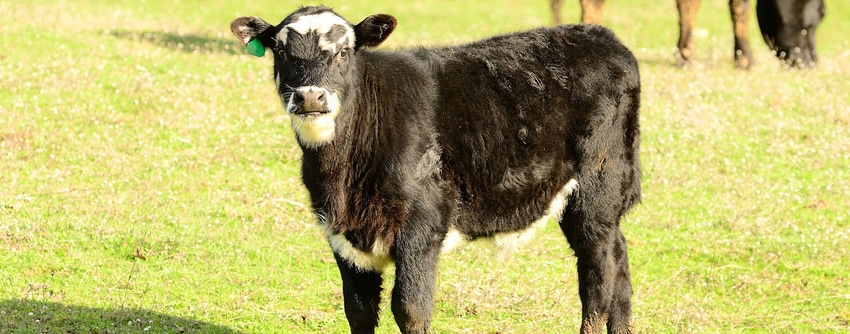
A recent study in Wyoming showed much-smaller cows could wean more total pounds of calf than larger cows, come drought or rainy years, potentially earning more money for a ranch.
Researcher Derek Scasta led a team examining a size-stratified group of cows on the University of Wyoming's research range facilities. The herd is wintered on one ranch at lower elevation and grazed through the summer and fall at higher elevation on a different location -- fairly typical for western ranch management.
The team found the higher stocking rate afforded by lower maintenance needs of the lighter-weight cows set the stage for higher overall production of calf tonnage from the combined two ranches.
The study measured 80 cows of middle age and prime productivity within the university's herd. All the cows were managed the same way. Researchers stratified them into five weight categories, from 999 to 1,398 pounds, and then recorded calf weaning weights for each weight category. These values were then imputed to ranch-level stocking rates for each weight class to create the comparisons of cow size and productivity.
Over the four years of the study, the lightest-weight cows would have weaned 24,251 pounds more calf per year than would a ranch full of the heaviest cows. The lightest cows also weaned the most total calf weight in a wet year, 2014. Again, with the ranch fully stocked by each weight category, light cows would have produced 45,475 pounds more calf weight than the heaviest cows. In a true drought year, 2012, smaller cows weaned more calf weight, which would have been up to 11,352 pounds more than a ranch-full of the heaviest cows.
This agrees with a study by animal scientist David Lalman and economist Damona Doye at Oklahoma State University, in which they determined smaller-framed cows would produce more total calf weight and also more income in the middle of the Great Plains.
One interesting twist from this research was the slightly larger cows actually were a bit more productive in a drought year. The researchers suggested this was because in situations of low forage production, larger cattle have a slightly larger dry matter intake. No such advantage has ever been found in cases with high forage production, and notice the advantage still did not extend to the largest cows.
It also seems appropriate we convert the average production of calf weight from this study to monetary values. If we multiply the calf tonnage in the chart under the average, the drought year and the wet year by the average price of about $142 in fall 2012, which was about the middle of the price range for the study using a weekly futures price chart, here are the gross sales values for the big-cow versus the small-cow ranch.
4-year average Wet year Drought year
Big cows $139,024 $140,018 $124,325
Small cows $173,753 $204,592 $133,600
Remember that the management did not change for cow size and only a few minor expenses for things such as vaccines would rise with higher numbers of cows. This suggests much higher profit potential for the smaller cows.
The Wyoming researchers also ranked the cows by an efficiency rating they based upon pounds weaned per unit of forage consumed. This is a measurement potentially leading back to economic considerations of production per acre and potentially profit per acre. The cow size is not as important in this measurement as the total amount of calf weaned from the amount of forage resources available.
As the researchers explained, "This approach to quantifying the efficiency of range cattle has economic implications because it is a ratio of output relative to input."
By that measure, researchers found efficiency for the smallest two cow sizes was always greater than efficiency for the largest two cow sizes.
Read the research report.
About the Author(s)
You May Also Like




